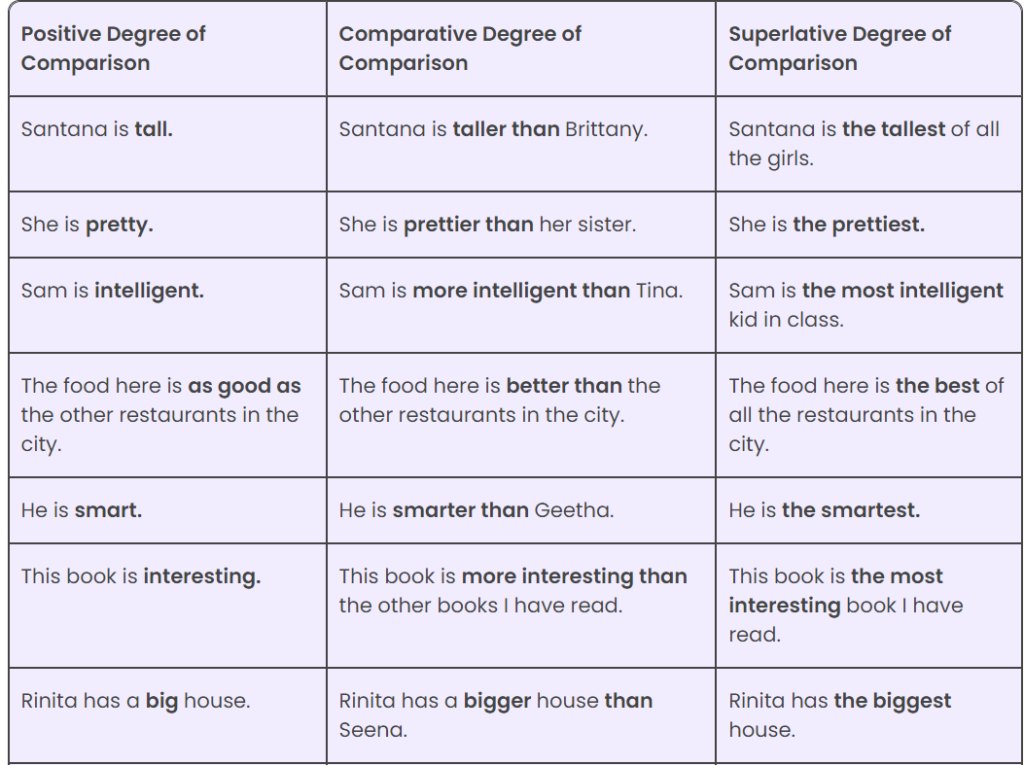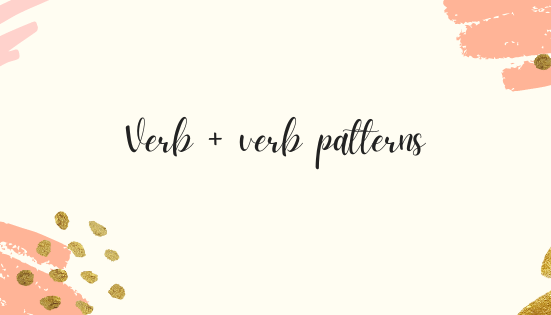Understanding degrees of comparison is a fundamental aspect of English grammar. Whether you’re an English language learner or a student preparing for language proficiency exams like IELTS, having a strong grasp of degrees of comparison is essential. In this blog post, we will explore what degrees of comparison are, how they work, and provide examples to help you use them effectively in your writing and communication.
What Are Degrees of Comparison in English Grammar?
Degrees of comparison, within the realm of English grammar, refer to a form of adjectives used to draw comparisons between entities sharing similar qualities. This linguistic concept pertains to adjectives and adverbs within sentences. According to the Collins Dictionary, ‘degrees of comparison’ is defined as the representation of an adjective or adverb in its positive, comparative, and superlative forms. In simpler terms, degrees of comparison enable us to compare nouns with comparable qualities.
Understanding the Three Degrees of Comparison in English Grammar
As previously mentioned, degrees of comparison facilitate comparisons. In English grammar, there are three primary degrees of comparison:
- Positive Degree of Comparison
The positive degree of comparison represents the fundamental form of an adjective. It does not involve comparisons; instead, it conveys information about a specific quality attributed to a noun. For instance:
- Lisa is happy.
- This dress is pretty.
- He looks handsome.
- Meena is tired.
- The sun is bright.
- Comparative Degree of Comparison
The comparative degree of comparison serves the purpose of comparing two nouns possessing the same quality or the specific quality of a noun at different times. It indicates which of the two has a greater or lesser degree of the quality in question. For example:
- Tina looks sadder than Katie.
- This bed is more comfortable than the other bed.
- The sun is brighter than yesterday.
- Your hair is longer than hers.
- My brother is taller than me.
- Superlative Degree of Comparison
The superlative degree of comparison represents the highest level of comparison. It is utilized to compare similar qualities among more than two nouns, highlighting which noun possesses the greatest or least degree of the mentioned quality or qualities. Consider the following examples:
- We climbed the highest mountain.
- The last group was the best of all.
- The Himalayas are the longest mountain ranges.
- Sanjana is the tallest girl in our gang.
- Adharsh is the most silent boy in class.

Guidelines for Using Degrees of Comparison – Rules and Key Points
Just like other grammatical components in the English language, there are specific rules and guidelines to remember when employing degrees of comparison. Here are some key considerations:
- Degrees of comparison are employed to compare adjectives and adverbs.
- The positive degree of comparison represents the base form of the adjective or adverb and does not involve any comparison.
- The comparative degree of comparison is used to compare two nouns, whether they share or do not share the same qualities. It is typically marked by adding ‘-er’ to the end of the adjective.
- The comparative degree of comparison always incorporates ‘than’ after the comparative form of the adjective.
- A list of words mentioned below must be followed by ‘to’ and not by ‘than’:
Senior, Superior, Elder, Junior, Inferior, Preferable, Prefer - The superlative degree of comparison is used to determine which noun possesses the greatest or least degree of the quality or qualities in question. It is identified by the usage of ‘the’ before the adjective and the addition of ‘-est’ to the end of the adjective.
- When using the comparative or superlative degree of comparison, be sure to retain any adjuncts present in the sentence.
Examples of Degrees of Comparison in English
Consider the following instances that demonstrate the application of degrees of comparison.

Before exploring examples, it’s important to note that the rule of adding ‘-er’ and ‘-est’ to create the comparative and superlative degrees of comparison varies depending on the type of adjective. These types include:
Type 1: Doubling the final consonant of a monosyllabic adjective and adding ‘-er’ and ‘-est.’
Type 2: Adding ‘-er’ and ‘-est’ to monosyllabic adjectives where the last consonant is preceded by another consonant or two vowels. Type 3: Adding ‘-r’ and ‘-st’ to adjectives ending in ‘e.’
Type 4: Adding ‘-ier’ and ‘-iest’ to adjectives ending in ‘y.’
Type 5: Using ‘more’ and ‘most’ for polysyllabic adjectives.
Type 6: Irregular adjectives.
Understanding these types helps you correctly apply the rules of comparison when working with adjectives in English.
Degrees of comparison are a vital aspect of English grammar, enabling you to express differences in qualities among nouns. By understanding and applying the rules of positive, comparative, and superlative degrees, you can enhance your language skills, write more effectively, and excel in English language exams like IELTS. Practice and consistency will further strengthen your command over this grammatical concept.














